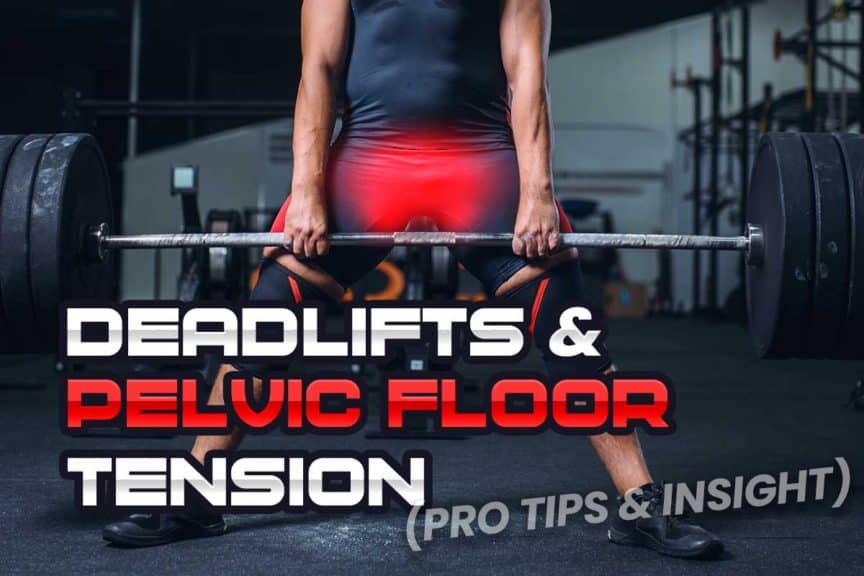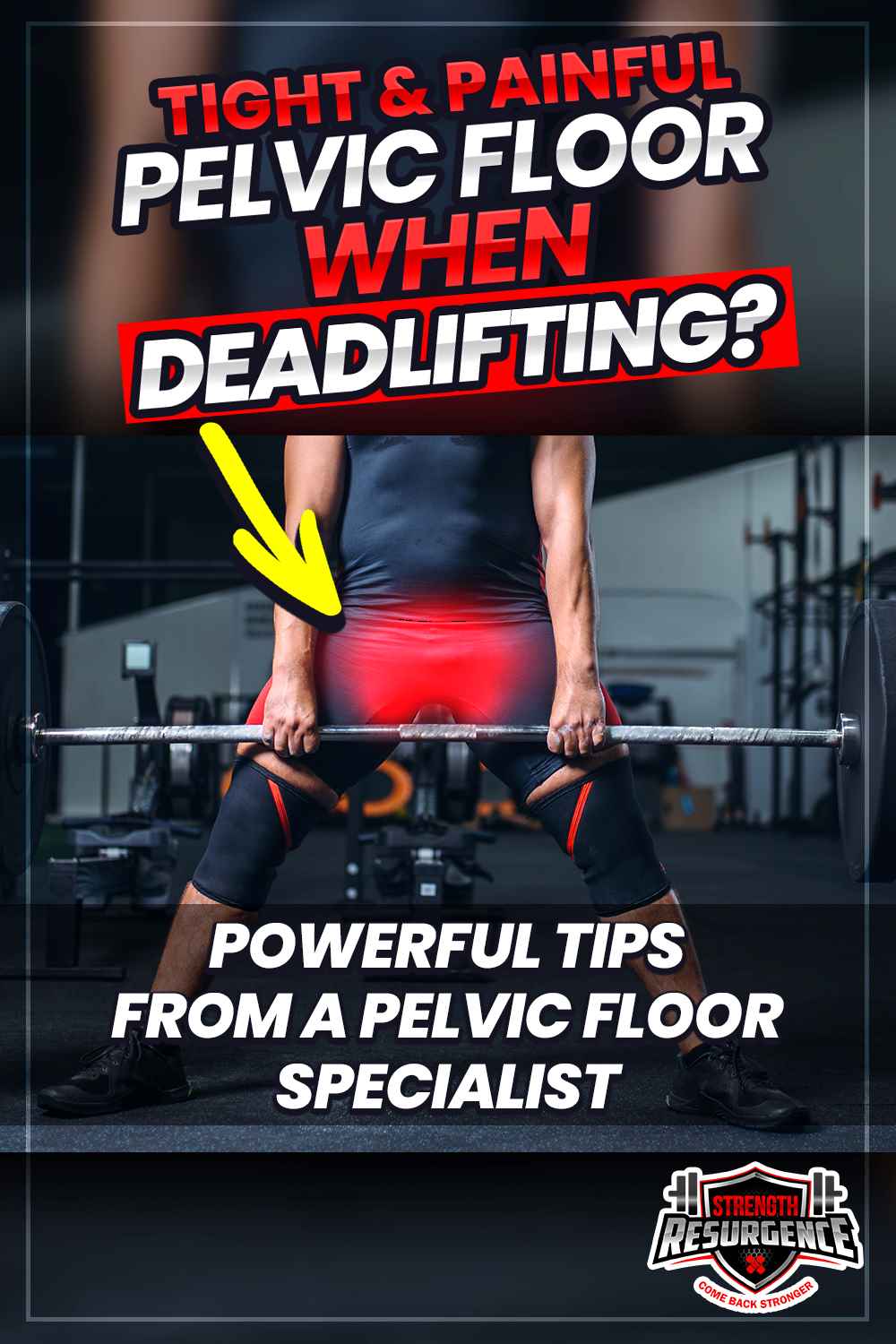Few strengthening exercises rival the deadlift regarding the benefits, functionality and practicality it provides. But, if it’s coming at the expense of wreaking havoc on your pelvic floor…well, then something ain’t right. If this happens to be you — whether you’re a guy or a girl — this article has you covered, as everyone has a pelvic floor (and dysfunction can happen to anyone)!
Pelvic floor tension or discomfort after deadlifts can result from referred pain from tight adductor muscles, abdominal fascial restriction, and improper breathing patterns. Solutions involve treating abnormal tension, temporarily modifying the deadlift, and implementing breathing exercises.
As always, these sorts of issues can involve numerous factors that are contributing to the underlying issue, and I certainly can’t cover everything within this article. However, take what’s in this article and use it as a starting point to help point you in the right direction for how best to tackle this issue.
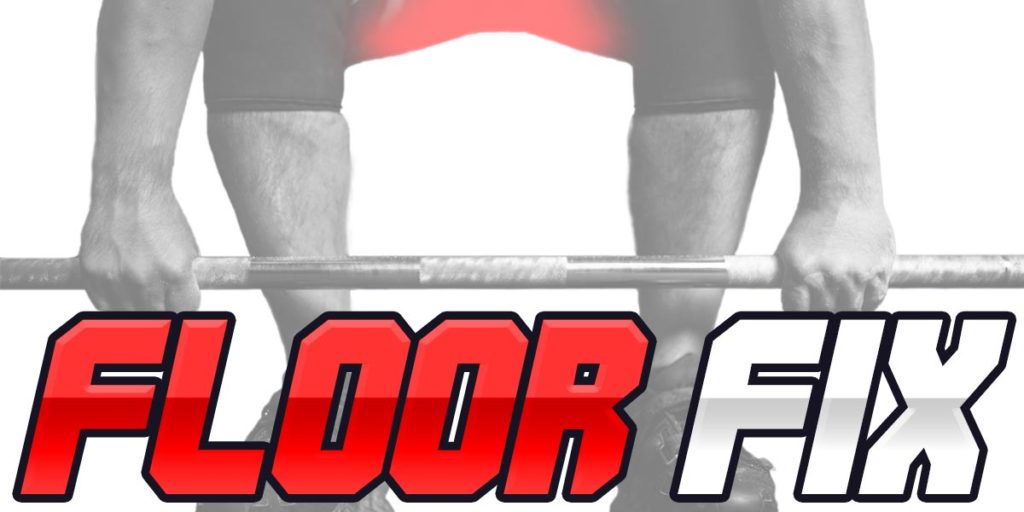
ARTICLE OVERVIEW (Quick Links)
Click/tap on any of the headlines below to instantly read that section!
The Basics: Pelvic floor 101
Tip 1: Check your adductor muscles
Tip 2: Check your abdominal fascia
Tip 3: Work on your breathing
Tip 4: Lighten the load
Tip 5: Find a pelvic floor PT
Related article: Good or Bad: Squatting and the Pelvic Floor (A Specialist’s Insight)
Disclaimer: While I am a physical therapist, I am not YOUR physical therapist. As a result, I cannot tell you whether or not any treatments or training methodologies mentioned on this website or in this article may or may not be appropriate for you, including treatment for pelvic floor pain. By following any information within this post, you are doing so at your own risk. You are advised to seek appropriate medical advice for any pain you may be experiencing.
Pro tip: Everything I know about the pelvic floor I’ve learned from my colleague Kelsey Drew, who is a licensed physical therapist and pelvic floor specialist. If you want to learn more about pelvic floor health from an incredibly knowledgable and passionate specialist, be sure to follow my friend Kelsey Drew on Instagram.
The Basics: Pelvic floor 101
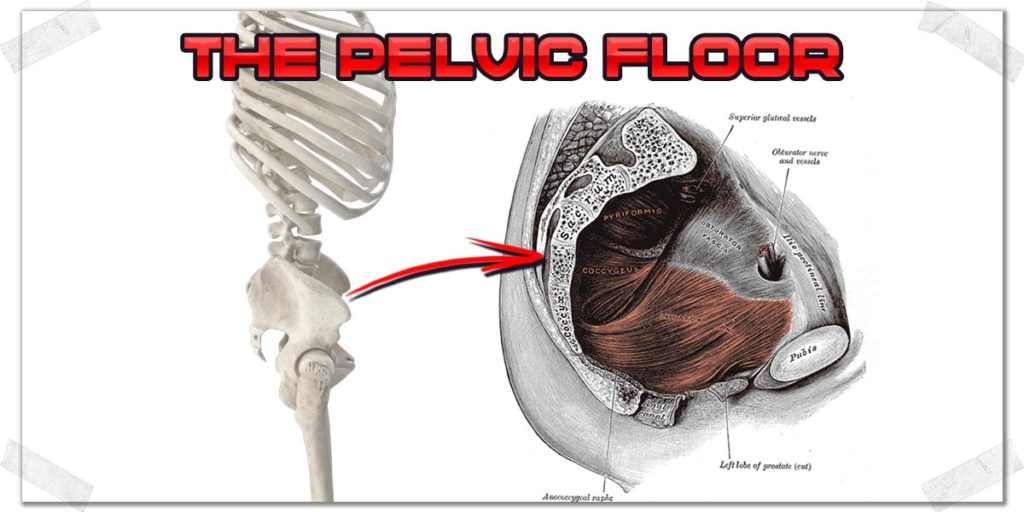
I know you’re not here to get lectured on the structure and function of the pelvic floor; however, it’s critical to have at least a rudimentary understanding of this group of muscles. It will help ensure you better understand the tips and insight in this article, why they have been specifically covered, and why they’re often so beneficial.
In short, the pelvic floor refers to a collection of muscles that sit within your pelvis (between your hip bones). Collectively, you can think of them as a “muscular hammock” that serves multiple functions. Some of these functions include:
- Providing support to our pelvic organs (such as the bladder and bowel for males and females, and the uterus for females).
- Providing support for the general pelvic region (including the lower back).
- Maintaining bowel and bladder continence.
- Acting as a pump for the general area (such as for lymphatic drainage).
Pelvic floor tension: The soup can analogy
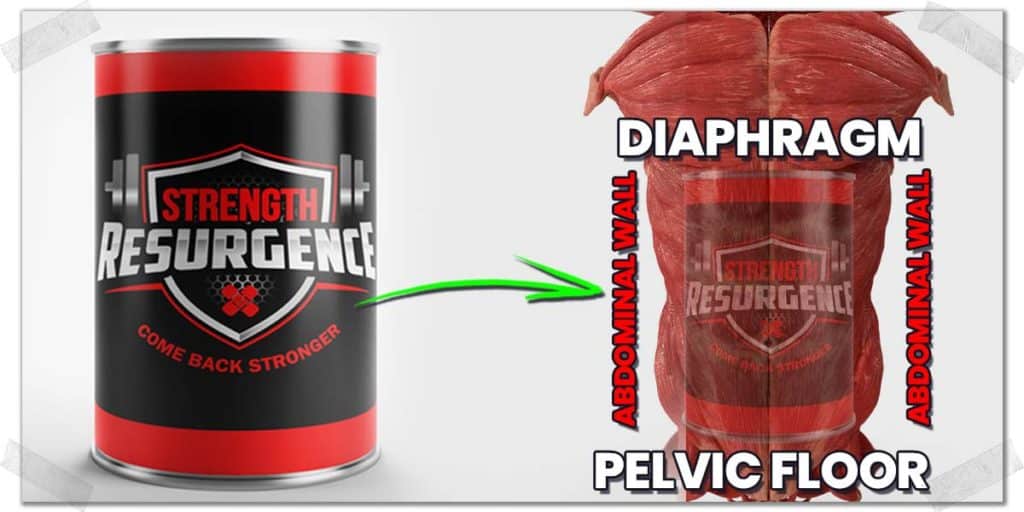
An easy way to visualize the pelvic floor’s function is to use the ol’ soup can analogy. In this analogy, all you have to do is think about the components of a closed can that houses the contents of the soup.
- Diaphragm = top of the soup can
- Torso = wall of the soup can
- Pelvic floor = bottom of the soup can
When using this analogy, the “soup contents” are the body’s visceral organs and abdominal contents.
Sometimes, for various reasons, the bottom of the soup can will become reactive (tight) in ways that lead to tension, pain or discomfort in the general region. The issue can be within the pelvic floor muscles themselves or other nearby muscles that directly refer their pain into this region.
Check out the tips below to start troubleshooting the issue and hopefully get things back under control!
Tip 1: Check your adductor muscles

If you’re getting a tight pelvic floor after your deadlifts and haven’t yet checked your adductor muscles, now might be the time to do so. This is especially true if you’ve been performing sumo deadlifts, which place a greater emphasis on these muscles.
The reason why is due to the phenomenon of referred pain. When it comes to the adductors (particularly the adductor longus and adductor magnus), these two muscles have been extensively documented by the renowned work of Janet Travell and David Simmons to refer their pain to the pelvic floor.
Related article: How to Prevent a Groin Pull (Complete Step-by-Step Guide with Photos)
Anecdotally, both Kelsey and I find that many of our patients feel their pelvic floor discomfort is drastically reduced after direct treatment of these muscles. (Keep in mind that while I’m not a pelvic floor specialist, I will still treat the adductor muscles if a patient of mine complains of a tight groin with intermittent pain in the pelvic floor region).
How to relax your adductor muscles
If you have access to a qualified healthcare professional, they’ll have no shortage of ways for helping to lower the tone of the adductors (when appropriate).
If you’re treating this area by yourself, however, your best bet is to perform some gentle Myofascial rolling to the area. This can include:
- Using a traditional foam roller or travel roller
- Self-massage
- Using a pilates ball
- Using a percussive device, such as a Theragun
- Performing active dynamic movements with a slider
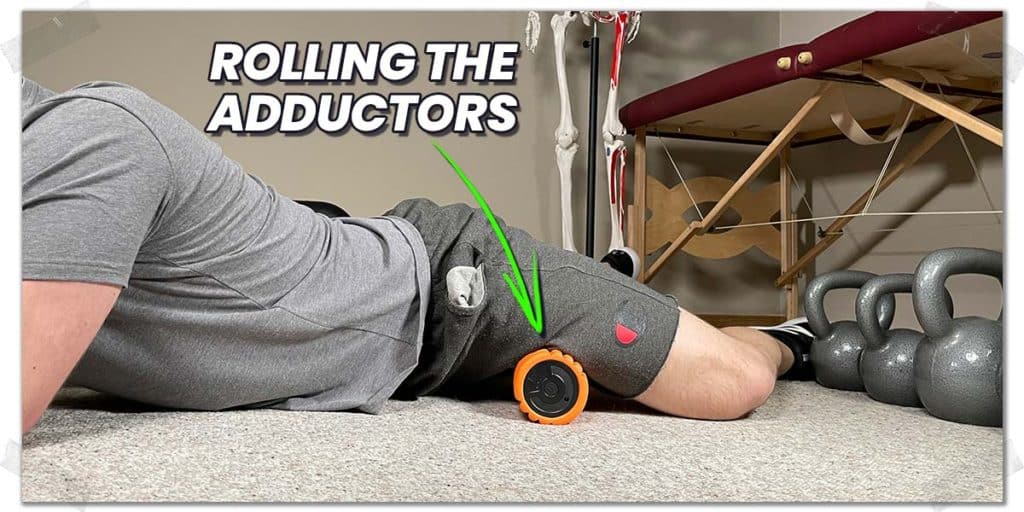
Regarding the dynamic movements, these work wonders for helping to gently stretch and mobilize the adductors without being too aggressive. I’ve had numerous patients whom have greatly enjoyed learning this technique, many of whom have told me it’s really improved their groin adductor tension. Check out the quick video below for a quick rundown!
Pro tip: Abnormal tension in the hip flexor muscles and the lower back muscles can also contribute to excessive muscular tension in the pelvic floor. So, it may be worth your while to get these areas under control in addition to your adductors.
Get in the habit of performing some sort of self-treatment technique every day, or every other day, depending on how things are feeling. You’re not looking to go crazy-aggressive with any of these techniques; instead, you’re just looking to produce a mild (but tolerable) discomfort over the area while working the muscles and associated tissues.
Tip 2: Check your abdominal fascia
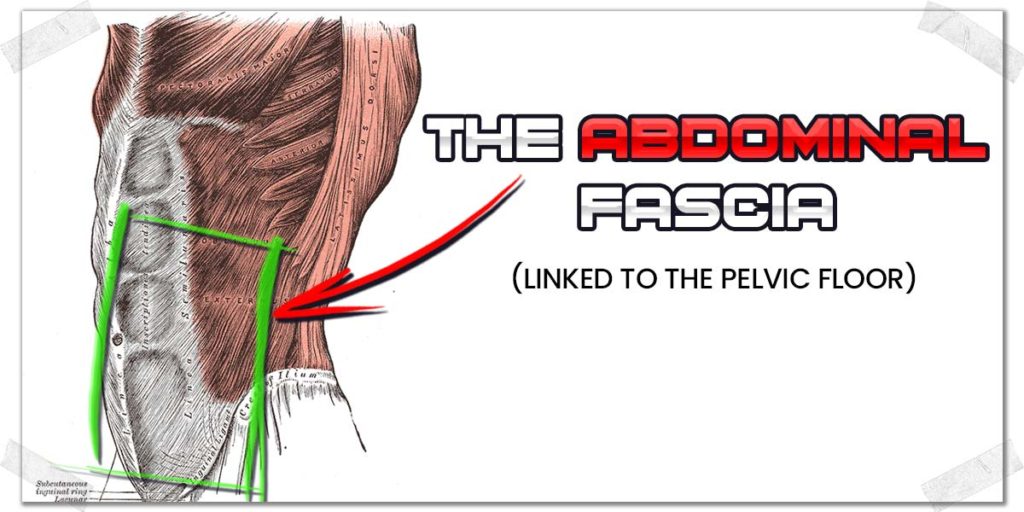
If you’re wondering, “why am I checking my abdominal region when it’s my pelvic floor that’s the problem,” it’s because the abdominal fascia links into the pelvic floor from an embryologic perspective. For simplicity’s sake, just think of it as the same phenomenon as with the referred pain arising from your adductor muscles back in Tip 1.
“Checking your abdominal fascia” might not be anything you’re familiar with doing, but don’t sweat it; this is how to check the area and what to look for:
- Grab hold of a soft (but somewhat firm) ball, such as a pilates ball, a moderately deflated junior-sized soccer ball, etc.
- Lay on the floor and place the ball halfway between your belly button and the pokey/bony part of your hip bone (the anterior superior iliac spine, or ASIS for short).
- Slowly let your body sink into the ball. From there, gently stir your body around the ball in small amounts. If you feel any particular areas that are “spicy” in terms of heightened tension or discomfort, let your body sink into these spots while you focus on breathing.
- Once you feel that the tension over the area of the ball has dropped or that you feel less tension in your pelvic floor, place the ball on the other side of your torso and repeat the process.
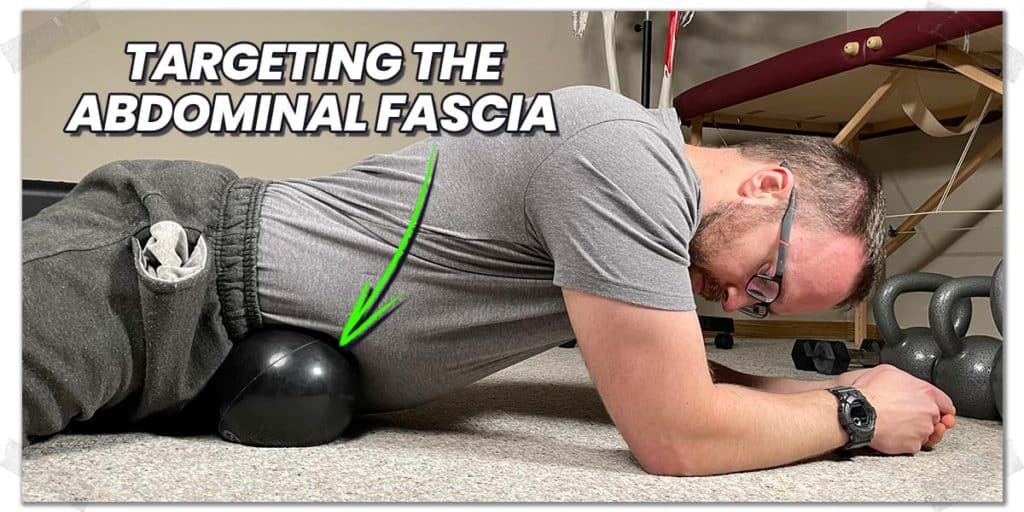
Remember: None of this should be painful; you’re looking for sensations of generalized — but tolerable — tightness or discomfort. If anything is painful, do not perform the technique.
It’s probably not a bad idea to perform this self-treatment technique regularly, especially if you feel that your pelvic floor tension or discomfort is noticeably better after performing this technique a few times. Not only can it help improve pelvic floor tension, but it can also be a great way of keeping the issue at bay.
Tip 3: Work on your breathing
While this likely won’t be an instant, game-changing tip, it’s a tip that will undoubtedly help if performed correctly and consistently as time goes on. The added benefit is that deep breathing can help reduce stress and tension globally throughout the body, which can indirectly help relax the pelvic floor (in addition to the direct pelvic floor relaxation technique mentioned below).
When performed correctly, the following deep diaphragmatic breathing can help directly relax the pelvic floor muscles. You can work on it as often as you’d like. Here’s my recommendation:
- Lay on your back, with your legs in the butterfly position (see photo)
- Place your hands on your stomach and take a deep breath through your nose while allowing your stomach to rise upwards.
- As your stomach rises upwards, focus on letting your pelvic floor gently expand outwards at the same time. It should be a very gentle feeling. Think of shutting these muscles off and letting them gently expand outwards with each deep breath.
- Repeat for as many breaths as desired. It may help to breathe for a set amount of time (such as five minutes) rather than a specific number of breaths.
Be patient with this technique; it may help to utilize it as an adjunct to this article’s other treatment methods and insight.
Believe me, if you get the hang of this one and perform it regularly, it can be a game-changer for reducing pelvic floor tension.
Tip 4: Lighten the load
When thinking back to the soup can analogy, there may be a bit too much pressure being held within your abdominal region throughout your deadlifts.
The more pressure that builds within your abdominal region, the more downward force there is pressing down on the pelvic floor. This is especially true if you perform the Valsalva maneuver with your deadlift and if you wear a weightlifting belt.
Neither of the two is inherently wrong, mind you. You just need to be aware that the Valsalva will substantially increase intraabdominal pressure and that the weightlifting belt will reinforce the abdominal wall. The resulting pressure has to exert its force somewhere, and the pelvic floor will be the destination.
Exposing the pelvic floor muscles to chronically high amounts of pressure with each deadlift can lead to high levels of tension within the muscles as they repeatedly work to fight the pressures exerted upon them. As a result, it could likely be quite an uphill battle to get things back under control if your pelvic floor is constantly holding on for dear life every time you deadlift.
If lifting heavy is a priority for you, don’t sweat it; lightening your deadlift load is only temporary. Just lighten it long enough until your pelvic floor discomfort or tension is resolved, then feel free to pile the weight back on.
How to lighten the load
While there’s no perfect science for determining how much lighter you’ll need to go, my recommendation would be to lighten the load enough until either:
- You can deadlift without any pain/discomfort showing up during or after your deadlifts.
- You lift as heavy as safely possible without the need to wear your belt (provided there’s still no pain or discomfort with this).
Once you’re essentially lifting just below the threshold of pain/discomfort or lifting as heavy as reasonable without a belt, hold this pattern for the time being while you continue to work on your pelvic floor tightness. Once it’s back under control, feel free to scale the weight back up.
Tip 5: Find a pelvic floor PT
A pelvic floor physical therapist (PT) is a physical therapist with specialized training for treating the pelvic floor (for females AND males). They have specialized, postgraduate level training for performing examinations and prescribing rehabilitation exercises, performing treatment techniques or using specific interventions to help you resolve your pelvic floor issues.
Remember: Pelvic floor physical therapists treat male and female pelvic floor issues — it’s not just for females!
If you’re really having a difficult time with the pain or discomfort of your pelvic floor, and you can’t seem to get things under control on your own, finding a pelvic floor therapist is likely your best next move to make.
Final thoughts
Since the deadlift is essentially one of the greatest exercises of all time, you’ll want to be able to perform this movement for all of your days ahead. But, if your pelvic floor is throwing a fit after each deadlifting session, you’ll need to take corrective action to get the issue under control.
Start with the tips in this article and use them to help point you in the right direction for getting back to pulling that weight off the floor pain-free!

Hi! I’m Jim Wittstrom, PT, DPT, CSCS, Pn1.
I am a physical therapist who is passionate about all things pertaining to strength & conditioning, human movement, injury prevention and rehabilitation. I created StrengthResurgence.com in order to help others become stronger and healthier. I also love helping aspiring students and therapists fulfill their dreams of becoming successful in school and within their clinical PT practice. Thanks for checking out my site!

